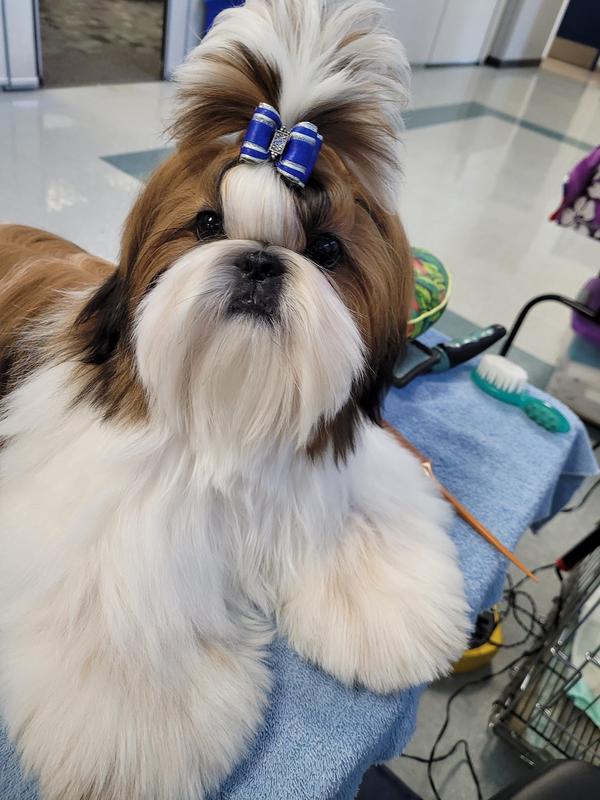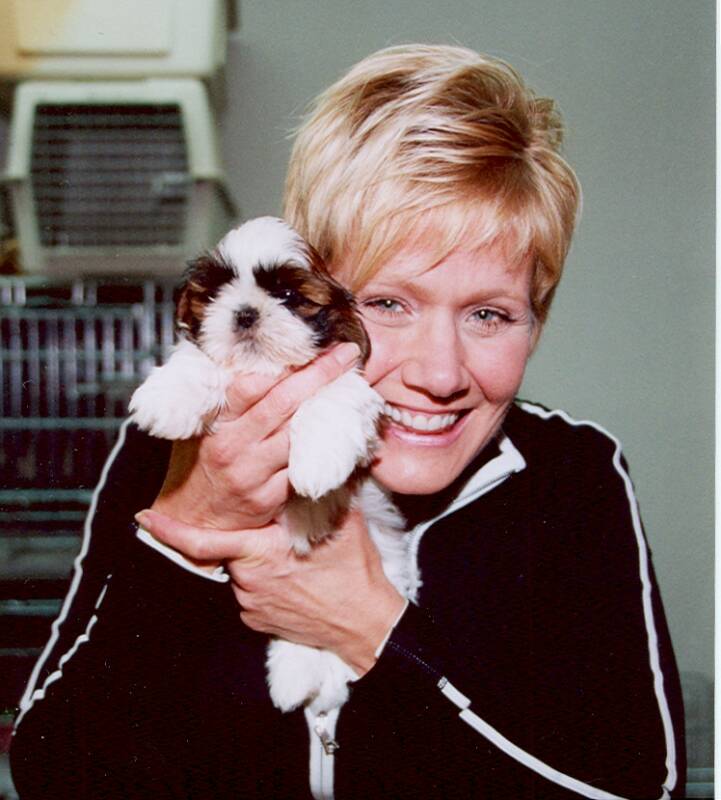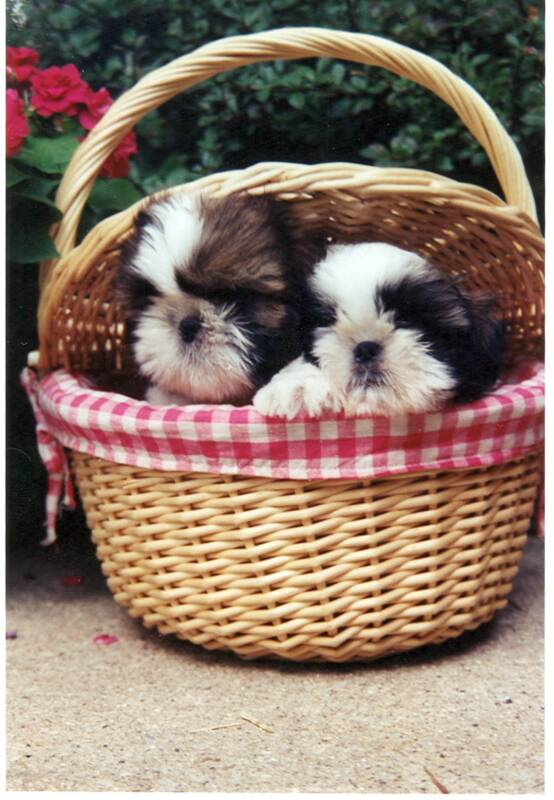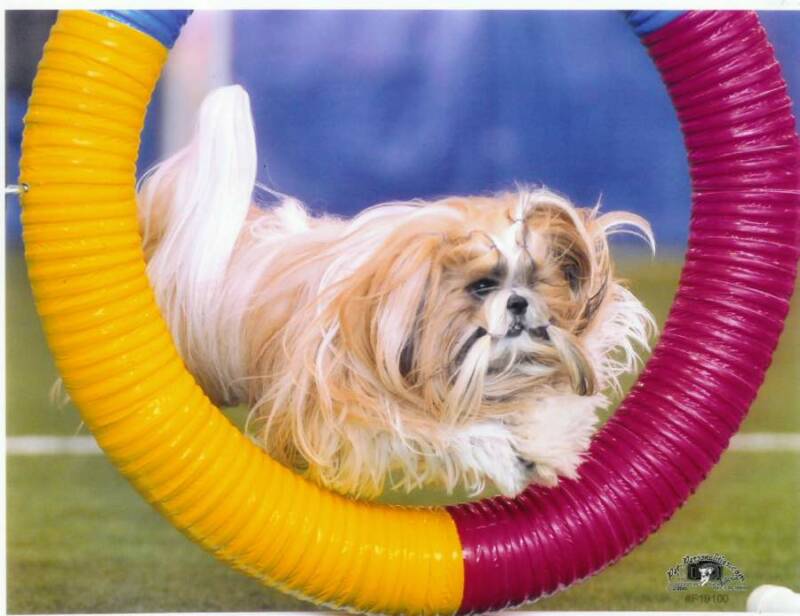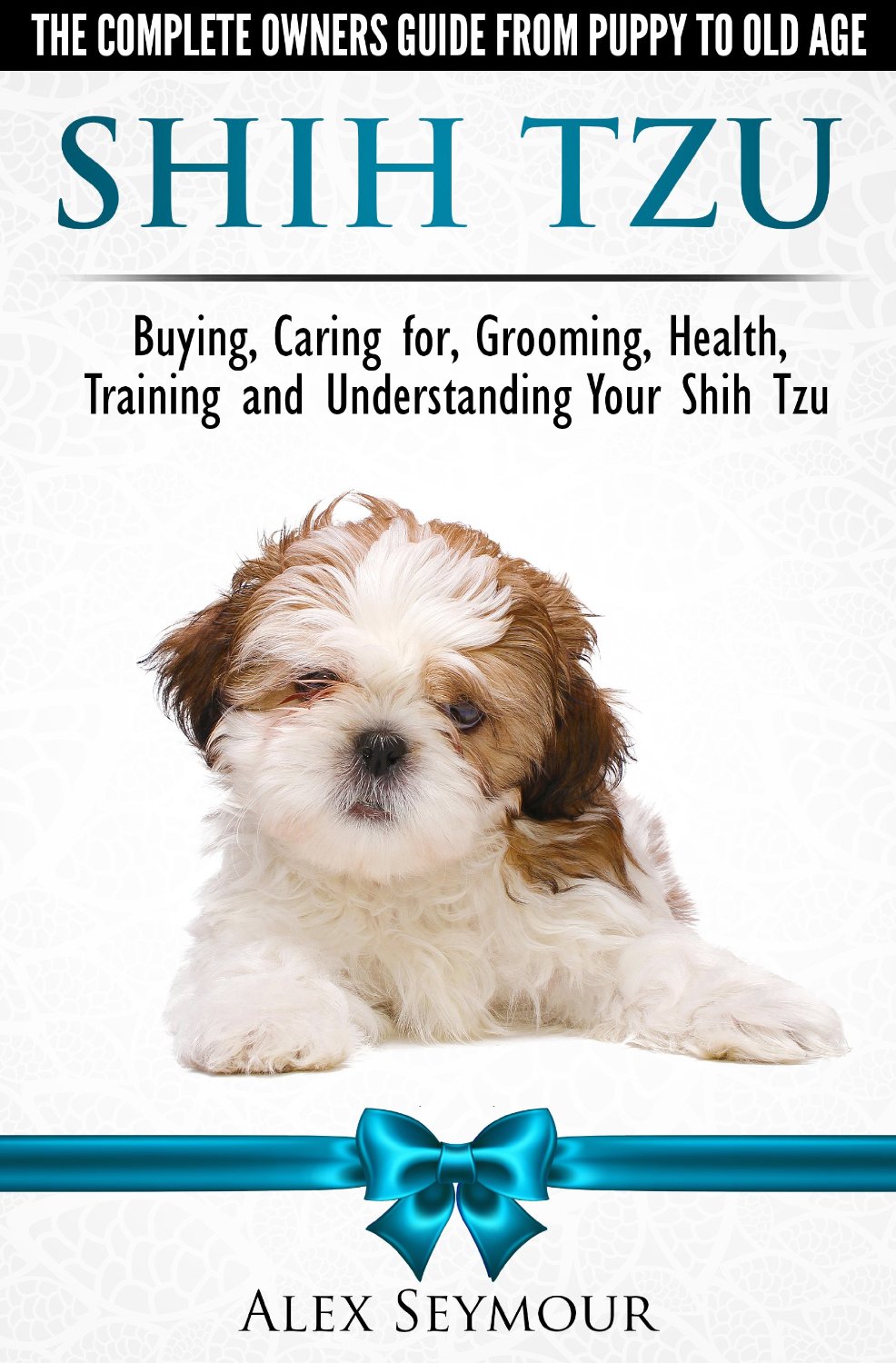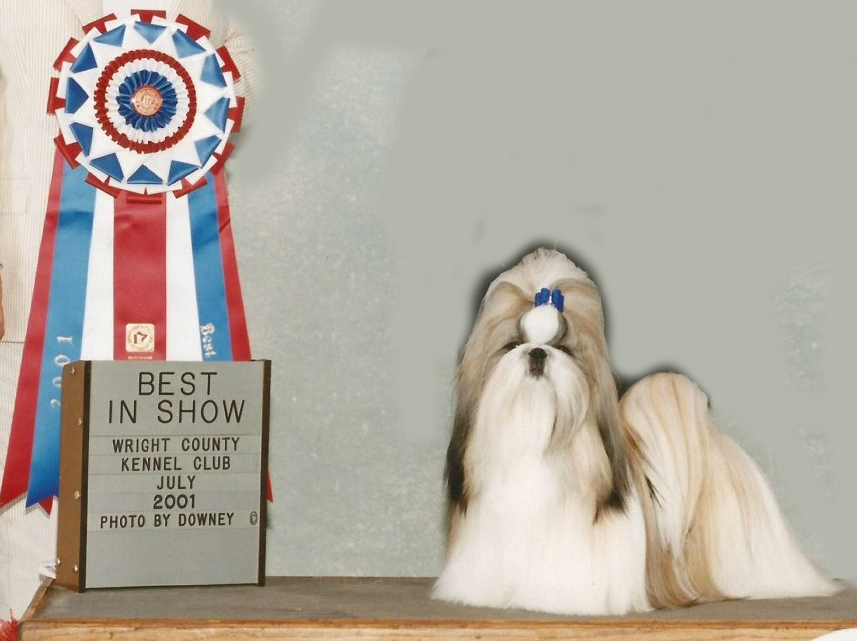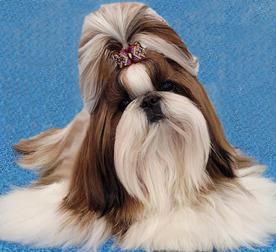PLEASE DO NOT PURCHASE A PUPPY FROM A PET STORE!!!

Allergies to pets?....please read this article before you purchase your next Shih Tzu: 'DONT'S' about feeding raw meat diets:
Avoiding Shih Tzu injuries:







Looking into Shih Tzu? More than 30 years of experience in our breed, a member of the American Shih Tzu Club (ASTC) since '89 and served as an ASTC breeder referral committee member, ASTC breeder education committee chair, a director on the ASTC Board and am an ASTC approved breed judge mentor. (see "Our History") I highly recommend reading the articles found on the American Shih Tzu Club's (ASTC) and the American Kennel Club's websites before your next purchase/adoption. I do not recommend purchasing any Shih Tzu whose description includes or intimates "Imperial/Tiny Teacup/Stained Glass/Teddy Bear, etc.. or designer dog/mixed breeds." Please do your research and screening. All breeders who care about their dogs will do the same with any prospective buyer. Please read our breed's AKC Official Breed Standard before your purchase. Take your time--you'll be glad you did.
Be part of the solution, spay and neuter your pet companions.
Clarification on dog clubs & ownership, "Buyer and Breeder Beware" and "Facts about Spay/Neuter"
Links
History of the Shih Tzu... by Jo Ann White
The exact history of the Shih Tzu is shrouded in mystery. It may well include not only Tibetan breeds such as the Lhasa Apso, Tibetan Terrier, and Tibetan Spaniel, but also Chinese breeds with similar qualities such as the Pekingese, Japanese Chin, and Pug. In the Buddhist religion, which originated in India, the lion was sacred. There were no lions in China, however, so when Buddhism traveled eastward the Chinese eunuchs and Tibetan monks bred their dogs to resemble lions. Also known as "Foo dogs," mythical "lion dogs" were depicted in imperial scrolls and guarded temples and palaces. The Shih Tzu were among the breeds known as "lion dogs" that came to be associated with Buddhism in China. In fact, the name Shih Tzu means "lion" in Chinese.
Development as a Distinct Breed
The development of Pugs, Pekingese, and Shih Tzu as distinct breeds that remain largely unchanged to this day was primarily due to the efforts of Qing (Manchu) dowager empress Cixi (Tsu Hsi), whose kennels were world famous. Breeding itself was carried out by the court eunuchs, who vied to produce desirable specimens with unusual markings and colors. It is believed that the breed became extinct in China after the 1949 Communist Revolution, because pet dogs associated with the royal court were considered corrupt symbols of privilege and wealth. Before this happened, however, a number of Shih Tzu were imported into Europe (often illegally) by diplomats and visitors to China. From there, the breed spread to Australia, the United States, Canada and elsewhere.
Modern Shih Tzu
The breed as we know it today is descended from just six dogs and seven bitches imported from China to England, Ireland, Norway, and Sweden between 1930 and 1948, plus a Pekingese dog (Philadelphus Suti-T'sun of Elfann) introduced to the breed in England in 1952 through a controversial cross. The descendants of this cross were not registered as purebred Shih Tzu in England until they had been bred back to pure Shih Tzu for four generations; the American Kennel Club required six generations.
From this small gene pool, the breed spread to other European nations, Australia, South Africa, the United States, Canada, Latin America, and elsewhere. The Shih Tzu was recognized as a distinct breed by the Kennel Club (UK) in 1946, by the FCI in 1954, and by the AKC in 1969. It is now one of the ten leading breeds in the United States. It has also become quite popular in such Asian nations as Japan, the Philippines, and Thailand. A few Shih Tzu have even been reintroduced into China.
Origins
 | ||||||
Two reference books I recommend are pictured above. The first on your left, by Alex Seymour, has an extra end section with my interview. Click on the photos to review and purchase on Amazon.
ASTC care & maintenance, health related informational links:
Vaccination News ! click
Puppy Training Information from Perfect Paws:
Best in Show, Best In Specialty Show Champion Fantasy's Supernatural, ROM, aka Santana
Each dog/puppy is its own genetic individual.
Personalities are strongly influenced by inherited genes as well as the environment. Studying the puppy's parents and related adults, the puppy's environment/human treatment will help you determine what will develop upon maturity.
50% of a puppy's genes come from its sire and 50% come from its dam. Temperament is considered to be passed to offspring as a dominant trait.
This is the reason why it is most important to search and screen for the best/right match to add to your family!
MYTH ABOUT IMPERIAL/TINY TEACUPS:
Memberships: American Shih Tzu Club
Shih Tzu Club of SE Wisconsin
Former member: Chicagoland Shih Tzu Club
Shih Tzu Club Of Wisconsin's Fox Valley
All registrations are with the American Kennel Club

FANTASY'S HOT LINE LYNETTE, ROM (ASTC Register Of Merit)
"May you always have love to share, health to spare, and friends that care."
Thank you for stopping by!
NEWSWEEK ARTICLE ABOUT DESIGNER DOGS:

Fantasy's 'China' Girl *ROM
American Shih Tzu Club (ASTC) Register Of Merit (ROM)
Recipient of the Honored ASTC Lainee Award as an
ASTC Top Champion Producing Bitch for 2015
 | ||||||
The Dog Listener DVD
AKC’s Safety Around Dogs Program for kids of all ages
We hope your visit with us is enjoyable and educational.
FANTASY SHIH TZU
Susan Clinton-Kilgore, BOM (breeder of merit)
Green Lake, WI 54941
email:
primary: 920-896-3017
home: 920-748-5659
Check dog food brand FDA recalls >>
Current information on available puppies/adults click the webpage link to "Nursery News Here:
For information links and recommended Shih Tzu reference books please scroll down this page.
 | ||||||
 | ||||||
 | ||||||
<<NEW AKC CHAMPIONS>>
IABCA INT. CH/AKC BISS CH. FANTASY'S SUPER HERO AKA JASON
(top & on 'Our Boys' webpage at bottom of page)
BISw CH. FANTASY'S CODE OF HONOR (right),
IABCA BIS/BISS Ch. FANTASY'S LOUIE LE GRAND (left)
All finished their titles quickly, red and white, lovely breed type. More can be found on 'Our Boys' webpage - scroll down near bottom of page to find CODY and LOUIE. JASON to be updated soon!
 | ||||||
